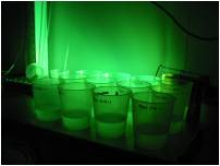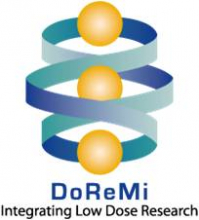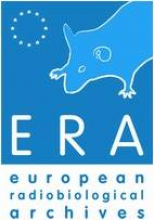Human epidemiology and low dose effects
ALPHA-RISK, DOREMI, ERA-PRO, MULTIBIODOSE, SOUL, STORE
| ALPHA-RISK - European project on the quantification of risks associated with multiple radiation exposures (2005-2009) | |
|---|---|
 | The aim of the 6th Framework ALPHA-RISK project was to improve quantification of the risk of cancer and non-cancer diseases related to chronic external or internal exposure (from U, Pu, radon and its decay products), factoring in the nature of radionuclides and the dose received by the organ. European, Chinese and North American research data were combined and used to improve methods of estimating the risk of lung cancer that may be attributed to radon decay products in the human habitat, in both smokers and non-smokers. (Photo: Clare Bradshaw, Stockholm University).
|
| DOREMI - Low Dose Research towards Multidisciplinary Integration (2010 - ) | |
|---|---|
 | The DOREMI network of excellence is addressing the health risks of low doses of ionising radiation including environmental, occupational and medical exposures. DoReMi aims to to aid the effective resolution of the key policy questions identified by the High Level Expert Group HLEG on Low Dose Risk Research.The HLEG is an initiative of representatives of six national bodies (with a policy interest or substantial research activities in low dose risk research) and the EURATOM research programme. DoReMi provides an operational tool for the development of the MELODI platform (Multidisciplinary European Low Dose Risk Re-search Initiative) which consists of major national bodies that have long term commitment in low dose risk research in Europe. MELODI is developing a Strategic Research Agenda for low dose research (see MELODI website for consultations). Publications:
|
| SOUL - Southern Urals Radiation Risk Research. Epidemiological studies of exposed populations in the Southern Urals (2005-2009) | |
|---|---|
 | The aim of the SOUL project was to quantify risks of late health effects associated with low-dose rate exposure to plutonium, strontium and external gamma radiation. This was done by improving, updating and analysing dosimetric and health data for the Mayak worker cohort (MWC), the extended Techa River cohort (ETRC) and the Techa River offspring cohort (TROC).
|
| STORE - Sustaining access to Tissues and data from Radiobiological Experiments (2009 - 2012 ) | |
|---|---|
The sharing of data and biomaterials from publicly funded experimental radiation science will yield substantial scientific rewards through re-analysis and new investigations. To that end, the STORE consortium will create a platform for the storage and dissemination of both data and biological materials from past, present and future radiobiological research. The platform will consist of a combined “Data Warehouse” and physical repository that will enable the sharing of experimental data sets and materials. STORE will provide a single portal to access radiobiological information that is presently distributed over scientific centres worldwide. The project will be completed by an assessment of viable financial models for long term support of a bioresource and Data Warehouse for radiobiology. STOREDB is maintained by the Bundesamt fuer Strahlenschutz. Please see the STORE website for more information. | |
| ERA-PRO - Promotion of the European Radiobiological Archives (2006-2009) | |
|---|---|
 | Molecular and genetic research is now providing us with the opportunity to quantify the risks of radiation exposure at the individual level. The retrospective analysis of earlier epidemiological and animal studies is an important resource for modelling and evaluating such new risk parameters. The EU and EULEP projects created a database collecting and collating data from available animal radiation biology studies carried out in Europe, the US and Japan between 1960 and 1998, plus those of two human cohort studies. This is now one of the databases which can be accessed from the STAR website. ERA can be accessed at no cost once an ID and password have been obtained from the curators.
|
| MULTIBIODOSE - Multi-disciplinary biodosimetric tools to manage high scale radiological casualties (ongoing) | |
|---|---|
The purpose of the 7th Framework multi-disciplinary collaborative MULTIBIODOSE project is to analyse a variety of biodosimetric tools and adapt them to different mass casualty scenarios. It is envisaged that the project will result in the establishment of a biodosimetric network that is functional and ready to respond in case of a mass casualty.
| |
